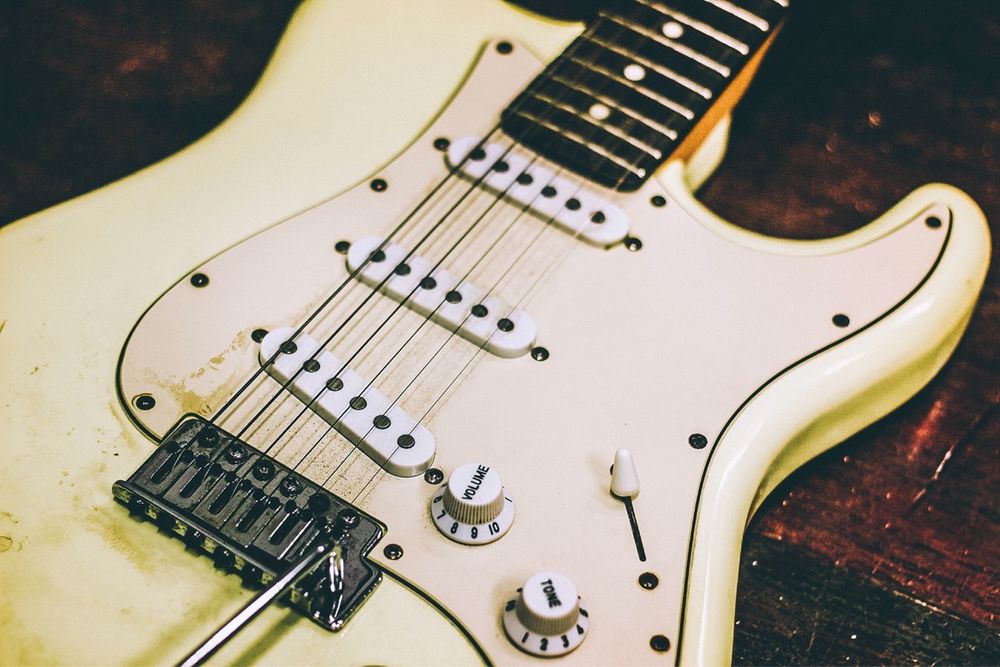Changing the strings of your electric guitar is an essential skill you’ll have to develop. Bobby Kittelberger from Guitar Chalk took the time to explain how to do this in an efficient way. Enjoy!
Estimated reading time: 4 minutes
In this blog
How to change electric guitar strings
There are a few different categories of guitars and bridge types that need to be understood when talking about how to change strings. To an extent, you could break them down into acoustic guitars and electric guitars. Though in this article, we’re talking specifically about changing strings on electric guitars while addressing two different types of bridges:
- Fixed bridge (stopbar)
- Tremolo or “floating” bridge
How exactly to change guitar strings will differ somewhat between these two bridge types, though the process is fairly easy in most cases. Let’s start with the simpler of the two scenarios.
Changing strings on a fixed bridge
If your guitar has a fixed bridge, like a PRS stopbar or Epiphone Les Paul, strings will be anchored above the body through the tailpiece itself. To change these strings, simply go through the following steps:
- Loosen the tuning peg for the string you want to remove
- Pull the string backwards through the tailpiece

Once that’s done, to put on the new string, you simply go in the opposite direction:
- Pull the new string through the hole in the stopbar
- Wrap the edge of the string around the corresponding tuner
- Turn the tuning peg so it’s moving counter clockwise (make sure to go this direction for all six tuners)
- Tighten the tuner until the string sits flat as the old one did
This is a simple process that is intuitive from the point that you start loosening the tuning pegs for the string you want to remove. Note that with all the strings off, the stopbar can just fall off the two anchors holding it in place.
Changing Strings on a Tremolo Bridge
Tremolo bridges are slightly different in that they route the strings through the body of the guitar. This can also be done in a stopbar bridge, though is far more common in tremolo bridge designs. In this case, you would still begin the process of changing strings by loosening the tuning peg, then pulling the strings out the back of the guitar.
- Loosen tuning pegs and unwind string from peg
- Pull loose string out the back of the guitar’s body

If this is a Stratocaster with a tremolo bridge, or some kind of floating bridge design, you’ll still be able to access the strings from the back of the guitar. There will usually be a plate covering that part of the guitar’s body. Once you remove said plate, you can remove the strings through the tremolo’s block.
Again, to put the new strings on, you go in the opposite direction. With tremolo bridges, make sure you fix the first string before moving onto the next, and going one string at a time. This will help prevent the bridge from shifting.
- Feed the first new string through the back of the guitar or through the tremolo block
- Pull that string through enough to wind around tuning peg
- Tighten the peg for the first string until the string lays flat and snug (fixed)
- Repeat this process for each individual string
While the complexity of the tremolo bridge might make this task seem more difficult, it’s actually a very similar process when compared to the fixed. You just need to know where to get to the anchor end of the string (the end of the string with the little rings) and pull the old string out. This is the same for both tremolo and fixed bridges.
Conclusion
Changing strings isn’t complicated once you do it a few times, though it can be time consuming. I’d advise using a decent peg winder (not the cheap plastic ones) or even a drill adapter to get the job done quicker. Then, it’s just a matter of understanding your guitar’s bridge construction and getting the strings removed.
About the author
This is a guest appearance by Bobby Kittelberger from Guitar Chalk. Bobby is Guitar Chalk’s founder and a contributor at Guitar World. He has also developed content for PRS, Seymour Duncan and IK Multimedia.


